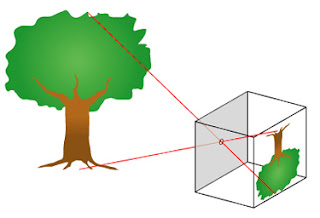1. cut negatives into strips of six
2. checked on light box
3. Put into bag
4 Make a test strip
a) set apature to F:8
b) make sure no filters are on
c)Place photo paper down with the glossy side facing up
d)place negatives on top of the paper glossy side up
e)Place glass on top of both
f) Expose to light for 1 second intervals using a black piece of paper to uncover it in sections.
Friday, 28 September 2012
Saturday, 22 September 2012
Thursday, 20 September 2012
Justin Quinnell Analysis
Justin Quinnell is a contemporary pinhole photographer who lives and works in Bristol carrying out workshops and lectures. He started his work around 20 years ago and tries to inspire other people with his unusual work.
The main theme's of his work are everyday life, mouths and unusual view points. He is mostly known for his mouth pinhole photography as it is so unique, showing the inside looking out at everyday life. His style is quite childish but very imaginative.
His pictures are all taken using a pinhole camera to capture the image and then using the dark room to develop them. He uses a variation of colour paper and black and white paper when taking the photo's. His photographs have a dull moody colour effect to them as some of the colours have been muted. The image above has been taken from the view point of someone's feet and also gives a feeling that they are spying on everyday life.
This photograph of the baby has a strange effect to it as the background is all black apart from the baby's face. This gives the idea that the light must be coming out from the mouth and highlighting the baby's face so it stands out.
At first I wasn't sure if I liked the style of the work as it is very unusual. I like the black and white photographs as it seems to give a sharper image and I like the contrast it gives, where as the coloured photos that don't look very bright or attractive.
Sunday, 16 September 2012
Pinhole photography moodboard
One- I like this picture as it has an unusual view point and all the lines of the building make it look very effective.
Two- The fish eye effect makes it look like all the buildings and roads are bending
Three- Another unusual perspective on life, I like it because the choice of using toothpaste seems so random Four- a pinhole camera placed inside the photographers mouth to get a strange view of everyday life.
Five- I like this photograph as the fish eye effect seems even stronger making it look like its bulging.
Friday, 14 September 2012
How to make a pinhole camera
1. Paint the inside of the tin with black acrylic paint.
2. Cut out a 1x1cm square hole in the side of the tin with a craft knife. Then cut a square piece of foil out and then using a piece of sandpaper scratch the surface of it so it is less reflective.
3. Once the surface is scratched colour in with a black marker pen and make a pinhole in the middle.
4. Finally stick the piece of foil with the black side facing in wards over the square hole in the tin using black tape.
Tuesday, 11 September 2012
How the pinhole camera works
A pinhole camera/camera obscura is the most simple form of photography, made up of a light proof box, light sensitive paper/film and a pin hole. The pin hole will be on the opposite side to where the film will be so when the light is let in through the hole the image from outside will be reflected upside down onto it.
Friday, 7 September 2012
Subscribe to:
Posts (Atom)





















